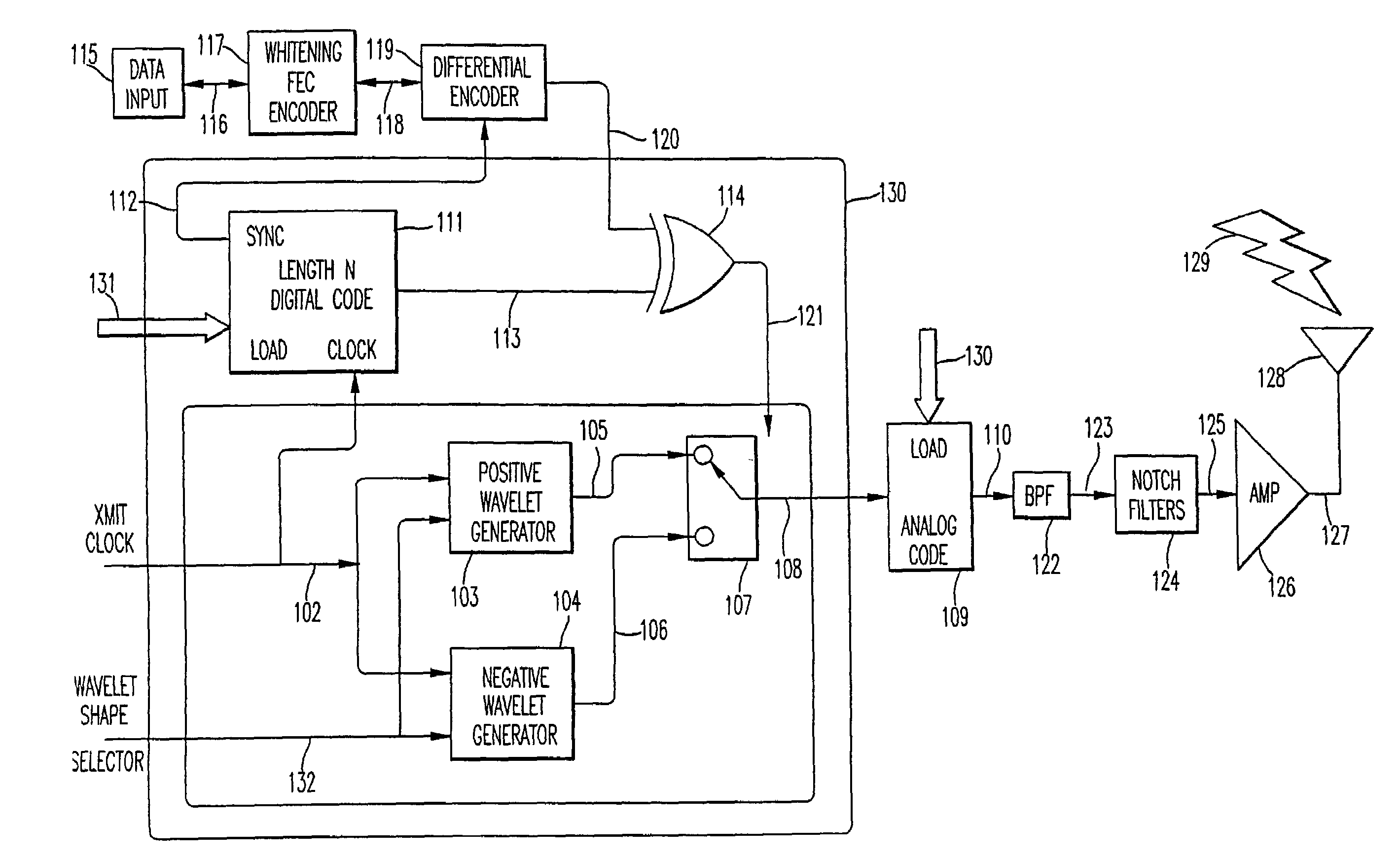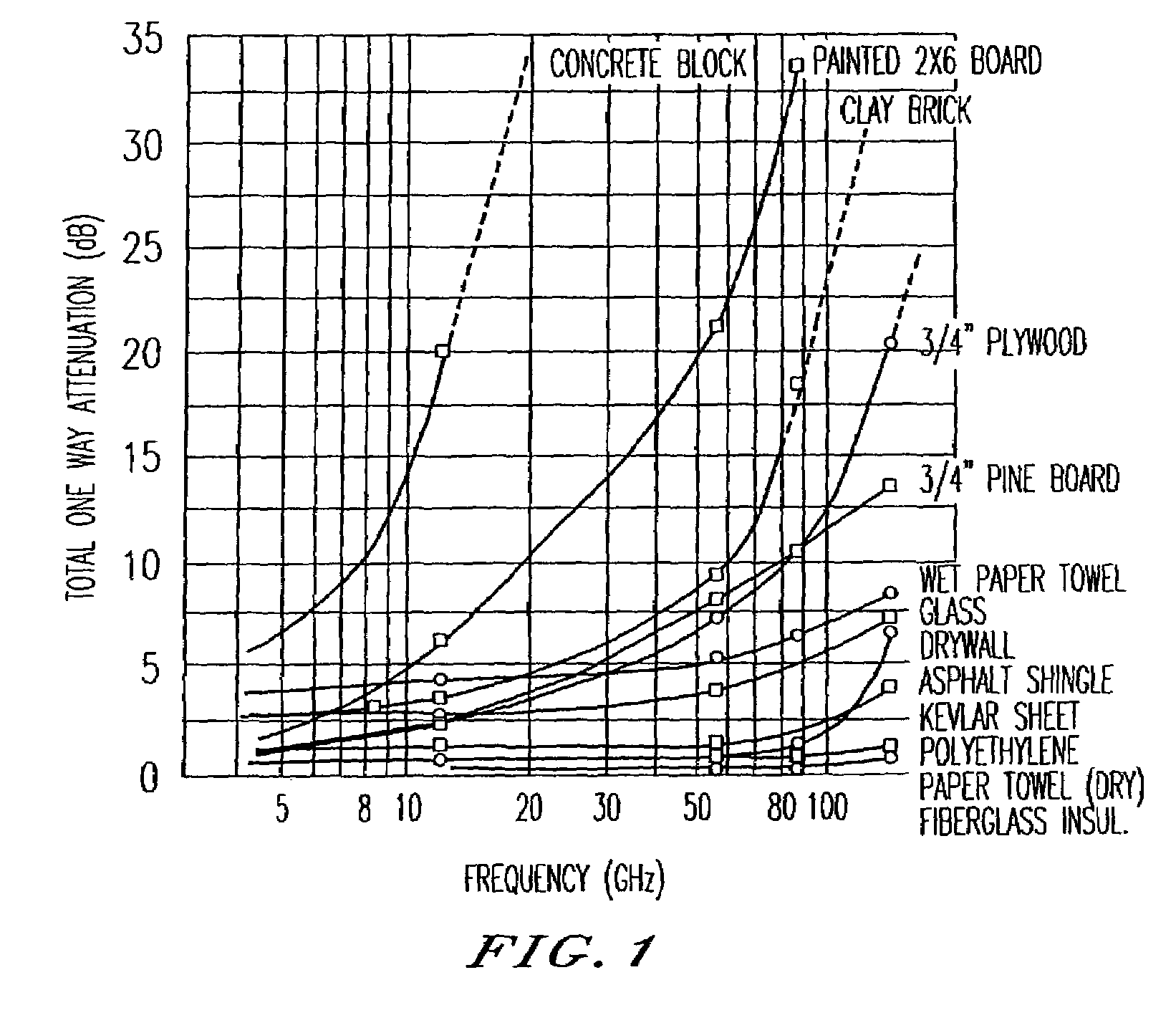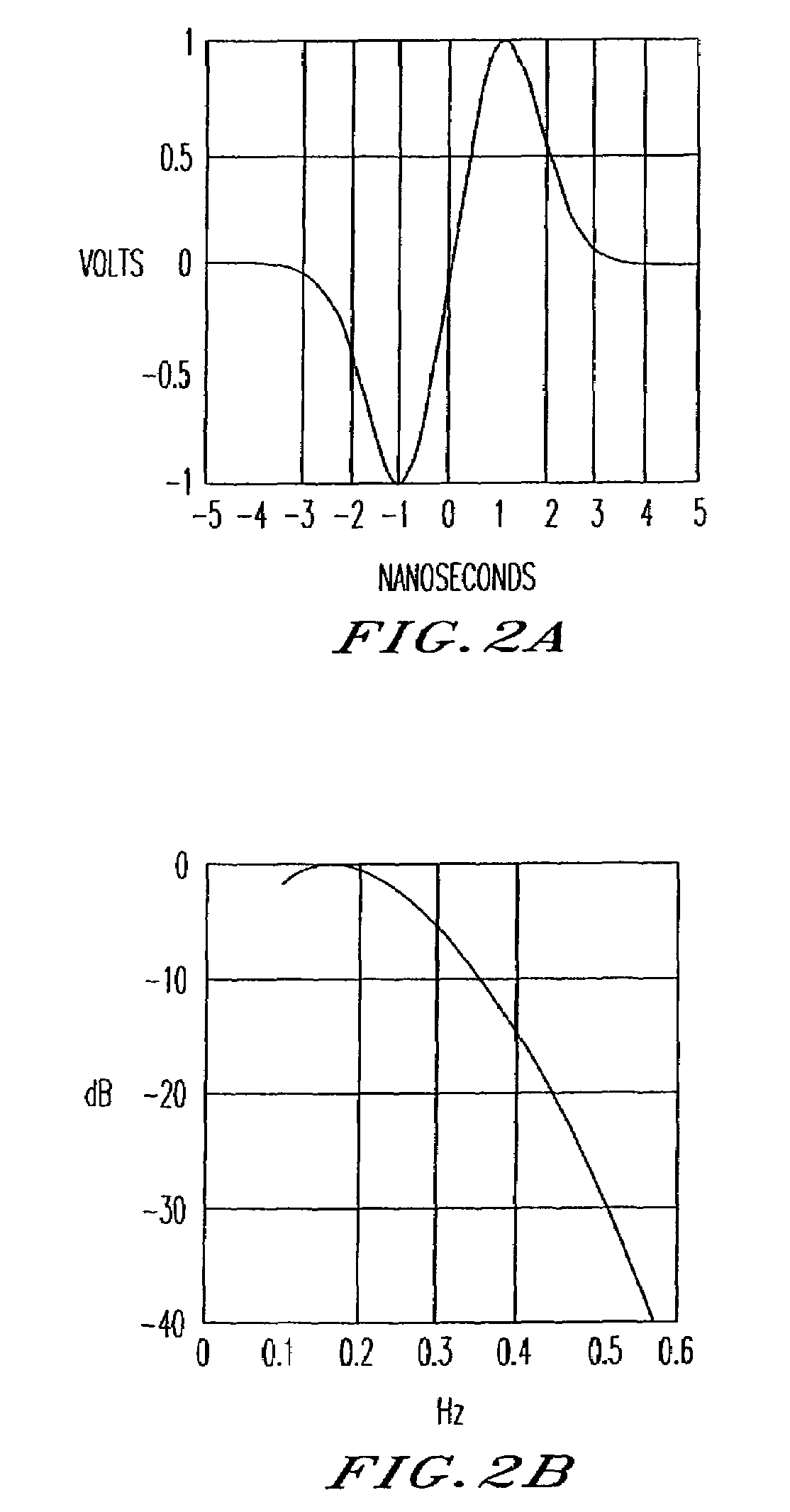Ultra wide bandwidth communications method and system
a communication method and wide-band technology, applied in the field of radio communication transmitters, can solve the problems of too much interference to the communication system, easy blockage of energy, interference on the part of other users, etc., and achieve the effect of increasing the data rate, speed and performance of logic circuitry, and increasing the efficiencies of communication
- Summary
- Abstract
- Description
- Claims
- Application Information
AI Technical Summary
Benefits of technology
Problems solved by technology
Method used
Image
Examples
Embodiment Construction
[0112]Preferred embodiments of the present invention will now be described with reference to the drawings. Throughout the several views, like reference numerals designate identical or corresponding parts.
Defining UWB
[0113]From an energy spreading perspective, or from a resolution perspective, bandwidth and center frequency can be treated independently. However, the term “relative bandwidth” is helpful in defining ultra wide bandwidth (UWB) transmissions.
[0114]As recognized by the present inventors, the motivations for preferring definitions based on bandwidth relative to center frequency follow from three primary desirable features. The first is immunity to scintillation and multipath fading. The only way to prevent scintillation, speckle, and multipath fading is to have resolution that is approximately equal to the wavelength. The second is penetrating materials with high bandwidth signals. To communicate at the highest data rates through lossy media, or to do the highest resolutio...
PUM
 Login to View More
Login to View More Abstract
Description
Claims
Application Information
 Login to View More
Login to View More - R&D
- Intellectual Property
- Life Sciences
- Materials
- Tech Scout
- Unparalleled Data Quality
- Higher Quality Content
- 60% Fewer Hallucinations
Browse by: Latest US Patents, China's latest patents, Technical Efficacy Thesaurus, Application Domain, Technology Topic, Popular Technical Reports.
© 2025 PatSnap. All rights reserved.Legal|Privacy policy|Modern Slavery Act Transparency Statement|Sitemap|About US| Contact US: help@patsnap.com



